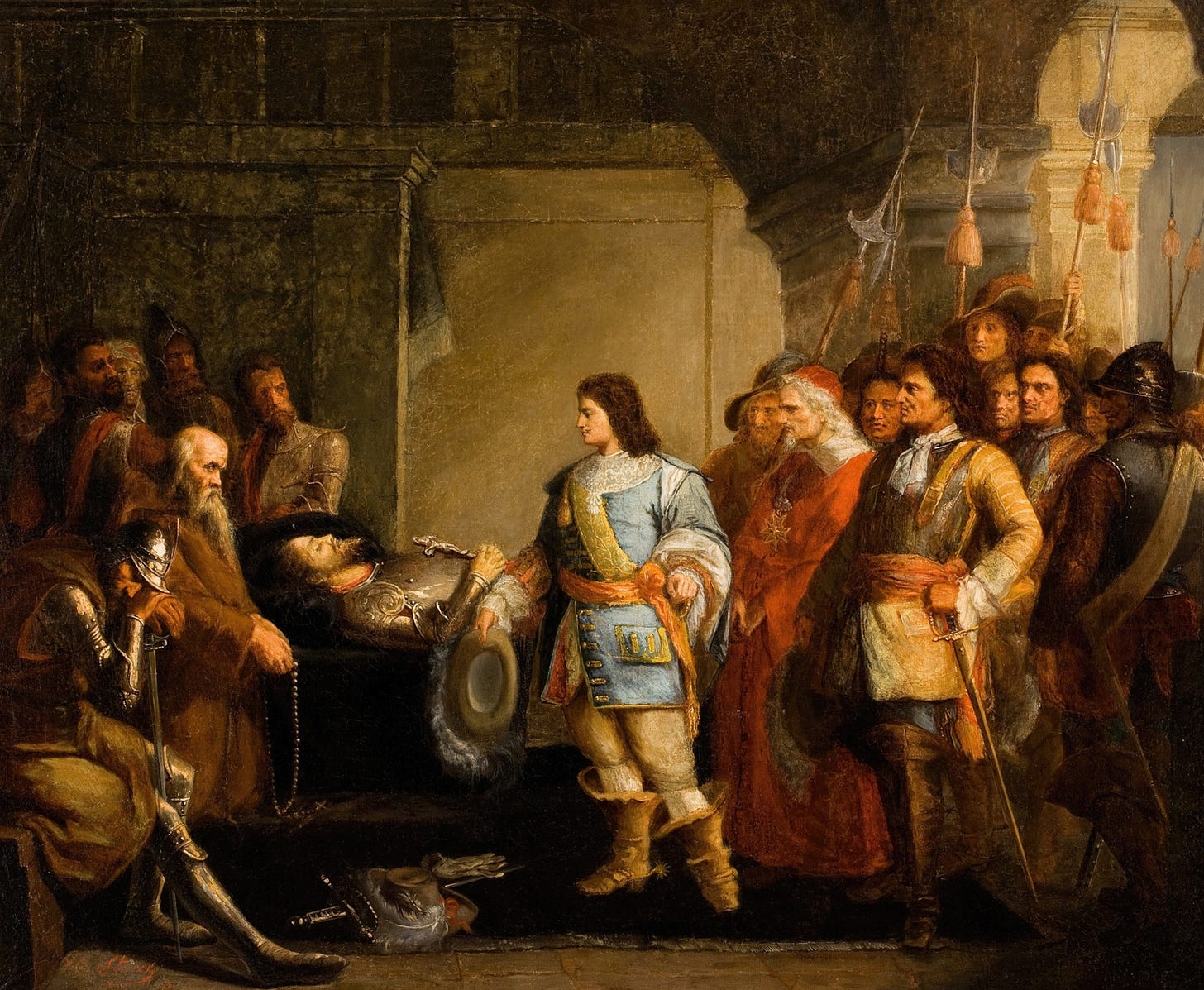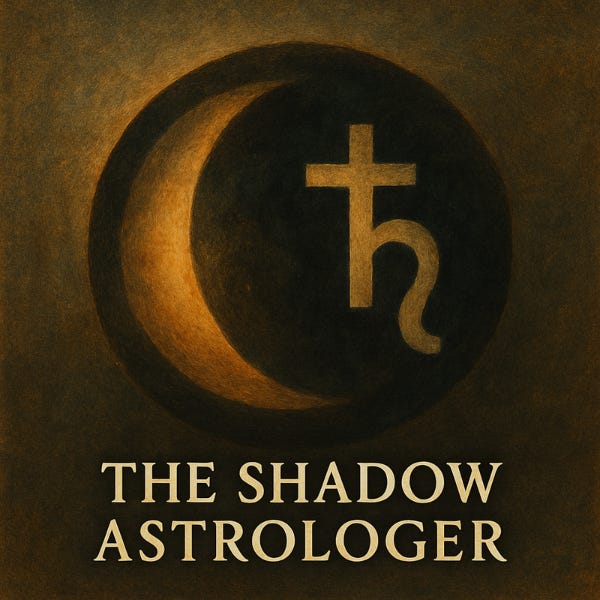When and why did we stop respecting ancient astrology?
From charting the fate of nations to daily horoscopes—the decline of astrology.
Astrology often finds itself ridiculed in modern conversation. Yet, CBS reports that it’s now a $3 billion‑and‑growing online industry. The typical response? Roll your eyes. “Seek your answers in God, not stars!” people say. I respect that. Personally, I also like to believe there’s something bigger and less defined than systems and ourselves. Yet, it’s worth asking: weren’t those ancient truth seekers, whatever name they used for the divine, the very ones who gazed at the sky for guidance in the first place?
Astrology’s oldest known birth chart comes from Babylon, around 410 BCE—predating the rise of most modern organized religions by centuries. But even that chart is the tip of a much older history. The roots of astrology reach back to at least the 16th century BCE, when Mesopotamian scholars compiled thousands of celestial omens in massive works like the Enuma Anu Enlil. Every planetary movement, eclipse, and unusual sky event was tied to decisions about harvests, warfare, royal succession, and the stability of entire empires.
In that context, astrology wasn’t seen as a fringe belief or mere fortune-telling. It was the intellectual infrastructure that connected the heavens to the affairs of Earth. The night sky was treated as a political and cultural archive, and the people trained to read it were often high-ranking scholars working within temples or royal courts. The Enuma Anu Enlil didn’t simply predict events. It was a handbook for aligning human activity with what was perceived as the order of the cosmos. In the absence of modern science and technology, this was how civilizations handled uncertainty.
When we talk about astrology in this early form, we’re talking about one of the earliest human attempts to map patterns over time, to identify cause and effect between the movements above and the events below. It was a way of interpreting reality and a way of placing human life within a much larger context. This made astrology not just a belief system, but a practical tool for survival, governance, and maintaining social cohesion.
The Babylonians developed a system of astrology grounded in mathematics and meticulous observation. They didn’t simply “watch the stars”; they measured them. They divided the sky into 360 degrees, mapped the ecliptic, and identified the twelve equal segments that became the zodiac. They tracked planetary cycles over centuries, recording the precise timing of their appearances, retrogrades, and conjunctions. They paid attention to the visible motions in the sky that lined up with events here on Earth.
Meanings were assigned not at random, but from patterns recorded across generations. If a planet’s appearance consistently aligned with floods, famine, victory in battle, or political upheaval, that data was preserved and codified. Over time, these observations formed a structured interpretive system that integrated empirical tracking with symbolic meaning. It was, in essence, the first large-scale body of evidence-based correlation between celestial movement and human events.
This framework eventually became the backbone for Greek and later Hellenistic astrology.
The Greeks took the Babylonian system and expanded it—adding philosophical reasoning, geometric models, and a focus on the individual through natal charts. What began as a collective tool for rulers and empires evolved into a more personal and psychological framework, but the mathematical skeleton was still Babylonian. Without that early precision and the ability to measure the heavens with accuracy, astrology would never have taken the form we recognize today.
Astrology in Philosophy and Science
Hellenistic thinkers like Plato, Aristotle, and Ptolemy also integrated astrology into philosophy and science. They weren’t starry-eyed mystics chasing superstition, but disciplined scholars who approached the heavens with the same intellectual rigor they applied to ethics, logic, and physics. For them, the movements of the planets and stars were not random. They were part of an ordered, intelligible system that could be studied, reasoned with, and applied to human life.
Ptolemy’s Tetrabiblos distilled centuries of observation and theory into a structured framework that explained not only how astrology worked, but why it should be considered a legitimate branch of knowledge. It became the cornerstone of astrological study in academic and scholarly circles for over a thousand years, shaping how future civilizations understood the connection between the cosmos and human affairs.
Astrology in Education, Medicine, and Western Tradition
In medieval Europe, astrology was part of formal education. Universities placed it alongside medicine, because diagnosing disease or predicting the course of an illness often depended on star charts. Physicians were trained to read planetary alignments before prescribing treatments, believing that the body’s health was tied to the same cosmic cycles that governed the seasons. In the Islamic world, scholars not only preserved these texts during Europe’s so-called Dark Ages but actively improved them, translating Greek and Babylonian works into Arabic, adding their own observations, and creating more advanced mathematical models for planetary motion. Through their efforts, astrology re-entered Europe, carried through centuries of careful study, as part of the larger body of Arabic scientific knowledge.
By the Renaissance, astrology’s reach had expanded into everyday life. In England, Nicholas Culpeper, a herbalist and physician, combined plant medicine with astrological principles, arguing that each herb was ruled by a planet and could treat ailments connected to that planet’s influence. His book, “The English Physitian”, became a practical guide for how to use the stars to choose the right remedies.
At the same time, astrologers like William Lilly were trusted political advisors. Lilly’s predictions during the English Civil War were sought by both sides, and his Christian Astrology remains one of the most influential works in the Western astrological tradition.
Far from being an isolated practice, astrology was built into humanity’s collective consciousness and the patterns of daily life. It created calendar systems, guided the planting and harvesting of crops, influenced political decisions, and dictated the timing of spiritual rituals. It was a practical and cultural tool, not just a philosophical one.
Wherever it was practiced, astrology served as more than entertainment. It was a way of aligning human life with the larger order of the universe.
So, why the decline?
During the Scientific Revolution of the 16th and 17th centuries, the growing emphasis on empirical observation, measurement, and reproducible results reshaped how people viewed knowledge itself. Astronomy and astrology, which had once been inseparable, were split into two different paths. Astronomy became the study of the physical universe, grounded in mathematics and verifiable data. Astrology, while still drawing on those same celestial observations, was recast by many as superstition or mysticism. It became something subjective, unfit for the new scientific method.
The shift wasn’t just about science winning over “belief.” It was also about cultural values changing. Knowledge was increasingly defined by what could be measured and quantified, leaving little room for symbolic interpretation or spiritual meaning. Astrology’s language of archetypes, correspondences, and symbolism didn’t fit neatly into the emerging model of modern science, and so it was pushed to the margins.
Yet, astrology never fully disappeared. It survived in folk traditions, where planting cycles, healing practices, and local weather lore still leaned on lunar phases and planetary movement. It found a new home in almanacs and later in the popular press, where “sun sign” horoscopes condensed a once-sophisticated system into bite-sized predictions for mass audiences. And in more recent decades, it’s reemerged through modern psychology, the self-help industry, and wellness movements—sometimes diluted, sometimes reclaimed, but always adapting to the cultural moment.
Its survival shows that even when stripped of institutional authority, astrology still speaks to something deeply human: the desire to find meaning in our place in the cosmos.
Today, we misunderstand it.
What was once a vast, multi-layered system of observation, symbolism, and philosophy is now often reduced to personality memes, quick sun-sign blurbs, or app notifications. The public face of astrology has been flattened into something consumable in seconds, stripped of the complexity and discipline that once defined it. That shift has emptied much of its historical and cultural importance. Instead of being seen as a serious study of human experience in relation to the cosmos, it’s too often treated as a novelty. It’s been watered down as something to just pass time, laugh at, or dismiss outright.
Yet people still turn to it.
According to Pew Research, nearly 30 percent of Americans say they believe in astrology, though many claim it’s “just for fun.” Still, that number is telling. In an age marked by constant change, social instability, and overwhelming information, astrology remains a reliable source that offers a way to make sense of unknown circumstances.
But it’s so much more than just about predicting events or labeling personality types. At its core, it’s a system for tracking cycles, patterns, and our place in them.
Astrology still holds soul because it’s built on a human impulse as old as civilization: the drive to connect to the environment, to the passage of time, to forces bigger than ourselves.
Historically, it wasn’t just a hobby. Philosophers used it to explore the nature of reality and consciousness. Physicians incorporated it into diagnosis and treatment. Rulers and military leaders sought astrological counsel before signing treaties, raising armies, or launching wars. It was embedded in the decision-making of entire cultures because it addressed both practical needs and deeper existential questions.
If anything, its persistence across thousands of years through cultural shifts, scientific revolutions, and religious transformations only shows that it answers something fundamental. Whether or not one “believes” in it, astrology continues to give structure to uncertainty and a mirror for self-understanding, which is exactly why it refuses to disappear.
The sky was—and always has been—alive with meaning.
I’m not offering a conversion.
I’m offering perspective: a reminder that what we often dismiss as an odd pastime was once the architecture of culture, medicine, science, and spirituality.
Entire civilizations measured time, made political decisions, treated illness, and shaped their spiritual practices with astrology as the guiding framework. It was a tool for survival as much as for meaning. Let’s not reduce it to empty words again. Give it that moment of thoughtful pause, because whether you believe in its workings or not, its influence on human history is undeniable.
If this makes you think harder, push back, or spark conversation… then it’s served its purpose.
Other ways to support:
☾ Book a Reading: scheduling.kelsiekilhoffer.com




